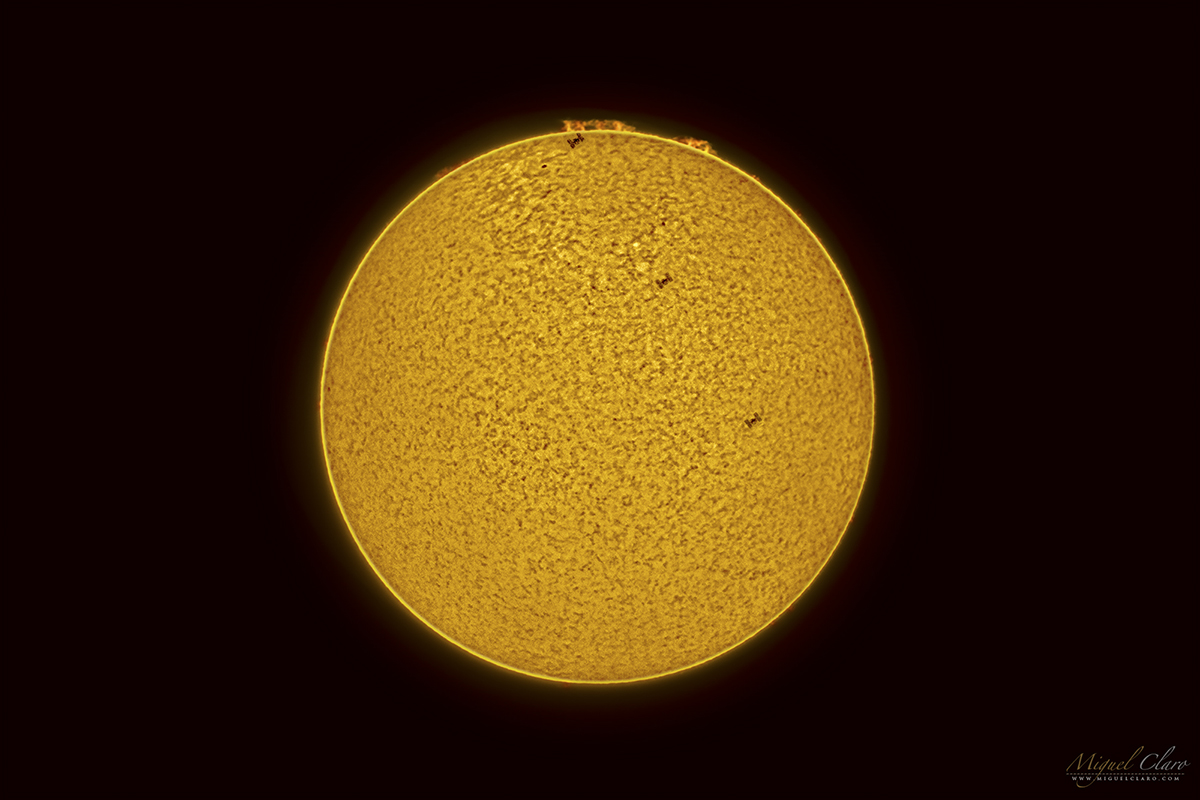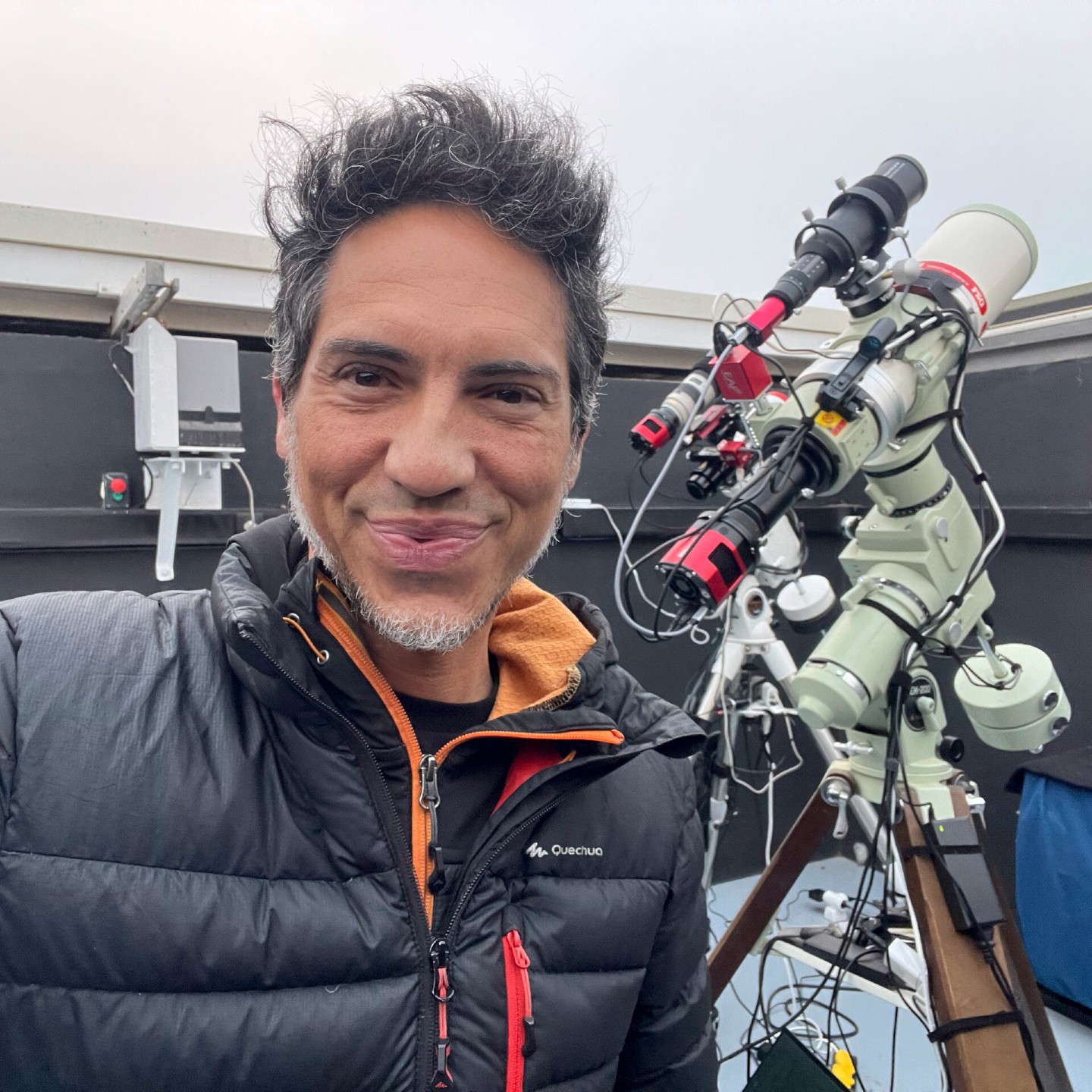Photographer Sees International Space Station Cross the Sun Amid Solar Prominence

Miguel Claro is a professional photographer, author and science communicator based in Lisbon, Portugal, who creates spectacular images of the night sky. As a European Southern Observatory Photo Ambassador and member of The World At Night and the official astrophotographer of the Dark Sky Alqueva Reserve, he specializes in astronomical "Skyscapes" that connect both Earth and night sky. Join Miguel here as he takes us through his photograph "International Space Station Crossing the Sun in Flares."
A blaze of solar plasma emerges from the surface of the sun in this photo taken of the International Space Station (ISS) as it transited the sun's disk on June 14, 2017.
Despite a recent outburst of strong solar flares, the sun is now entering a relatively quiet phase in its 11-year solar cycle. Though no sunspots or solar flares were present when this photo was taken, an interesting group of solar prominences can be seen in the sun's upper limb as the silhouette of the ISS passed in front of the sun's disk.
Solar prominences are glowing, red loops of plasma that extend outward from the photosphere, or the lowest layer of the sun's atmosphere. These features form when the sun's twisted and tangled magnetic field becomes unstable and opens, allowing plasma from inside the sun to leak out into the corona. [Sun Erupts With Spectacular Plasma Prominence (Photos)]
While prominences themselves pose no threat to the ISS or to people on Earth, they have the potential to erupt into coronal mass ejections, which spew enormous clouds of energetic particles into space.
Orbiting the Earth at an altitude of 248 miles (400 km) and at a speed of about 17,500 mph (28,000 km/h), the ISS completes an entire orbit around Earth every 92 minutes. Although this large artificial satellite is about as long as a football field at 357 feet (109 meters), it seems very small compared with the sun. With an angular diameter (or apparent size) of 31.5 arcminutes, the sun appeared about 30 times larger than the ISS in the moment of the passage.
An ISS transit of the sun is difficult to see, even with special telescopes equipped with hydrogen-alpha filters. (By the way, you should never point your photo lens, binoculars or telescope directly toward the sun without special solar filters.) Only the camera shutter snapping an ultrafast sequence of shots could capture this rare moment, which passed in a blink of an eye in 0.54 seconds.
Breaking space news, the latest updates on rocket launches, skywatching events and more!
This composite image was taken from the Dark Sky® Alqueva Reserve in Mourão, Portugal, on June 14, 2017, at 1:53 p.m. local time (1853 GMT). If you look closely at the photo, you may recognize aspects of the space station's structure, with the solar panels and main body well distinct, and remember that the small fleck in this photo has astronauts on board, with a privileged view from our beautiful "Pale Blue Dot."
To capture the image, I used a Lunt LS100THa solar telescope, a Nikon D810A camera with a DX lens (f/7 and ISO 1600), and an exposure time of 1/6400 seconds.
See more of Claro's amazing astrophotography at miguelclaro.com. Follow us @Spacedotcom, Facebook and Google+. Original article on Space.com.
Miguel Claro is a professional photographer, author and science communicator based in Lisbon, Portugal, who creates spectacular images of the night sky. As a European Southern Observatory photo ambassador, a member of The World At Night and the official astrophotographer of the Dark Sky Alqueva Reserve, he specializes in astronomical skyscapes that connect Earth and the night sky.

